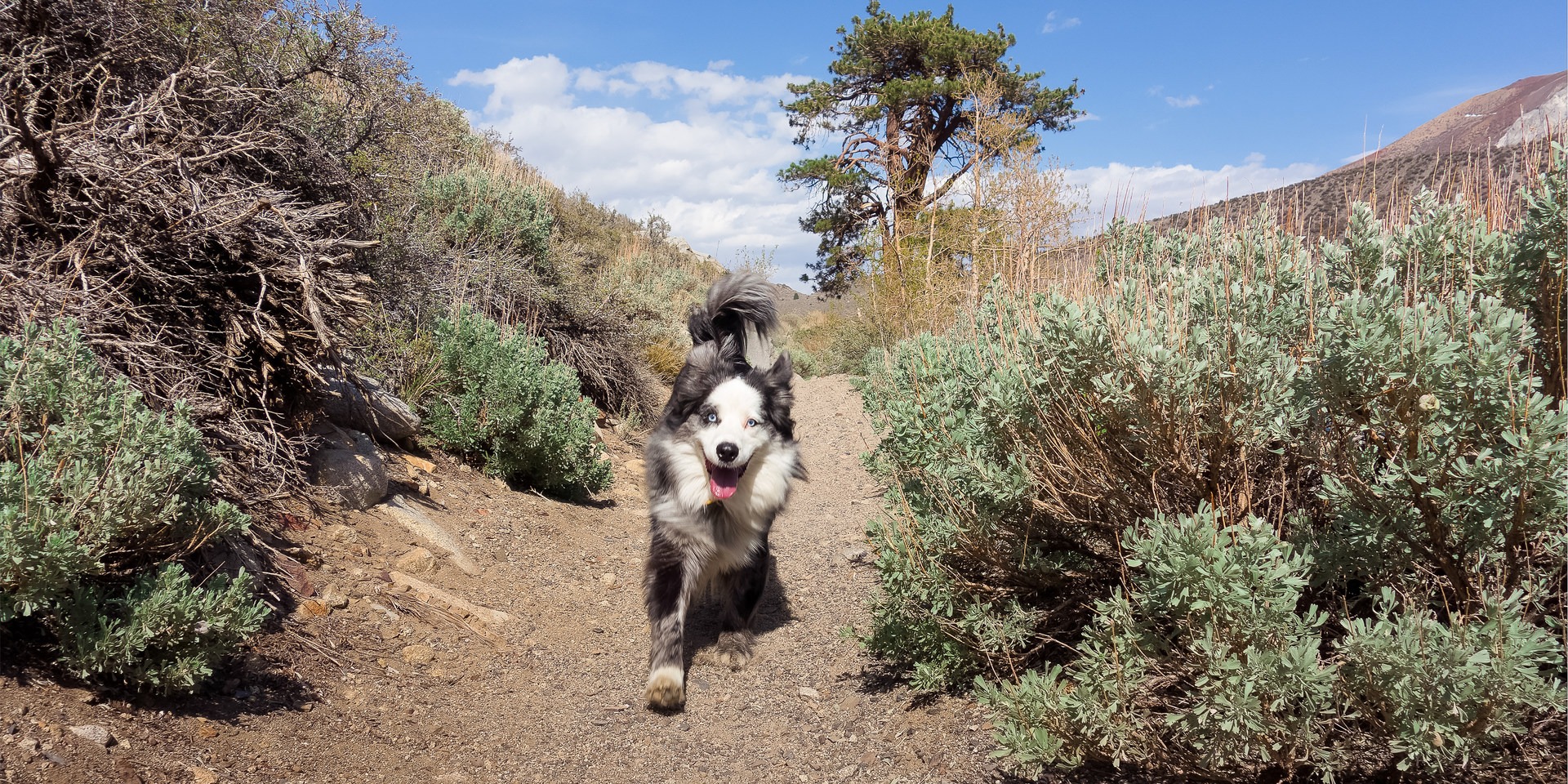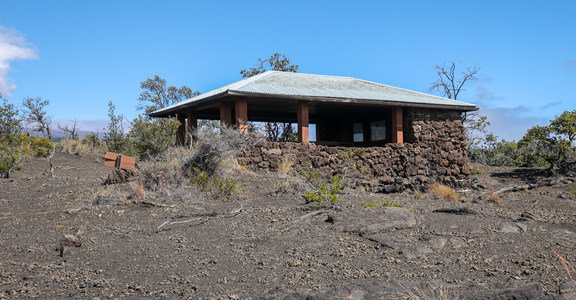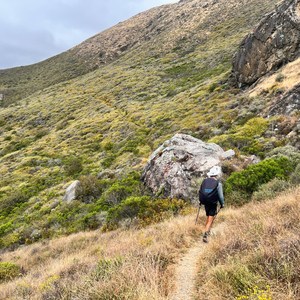We can finally say it without risk of jinxing ourselves into a snowstorm: Spring is sprung. And as early blooms unfurl their sprightly petals, so do maps all over the country assume their rightful place on kitchen tables as summer adventure planning ensues. If you’re like us, the one element that truly ties the scene together (besides a good human friend and a cold beer) is a snoozing, ever-ready four-legged companion.
Making a summer checklist, for us, is all the sweeter when we imagine bagging a peak or arriving at an alpine lake alongside a euphoric dog. The no-bad-days mentality inherent to that entire species is infectious—especially when the miles seem to drag on and you’re realizing you never even really liked Clif Bars, anyways. But, unlike a headlamp and fleece layer, a dog isn’t something you can simply pack and go.
Of all of the trail convictions and hard-headed opinions that surround trail etiquette and outdoor recreation in general, those that address dogs in the outdoors are arguably the most contentious. For every owner passionately advocating for fewer leash laws, there are just as many that are at the ready to loudly oppose. At the end of the day, it’s simply a fact that a well-socialized, highly trained, exhausted dog is happiest. But that should never come at the expense of others’ abilities to enjoy the outdoors. Be a discerning judge—having realistic expectations of your dog and a patient outlook are critical factors in positive experiences for all. We’ve outlined a few suggestions for better summer adventuring with your number one.
Keep in mind that above all, established trail rules and Leave No Trace trump all else. Read the signs, leash up, respect no-dog zones, pick up that poop, give others the right-of-way, and adventure with good intentions. Please, don’t ruin it for the rest of us. And good Lord, who still leaves green poop baggies on the side of the trail?! Carry it out!
Is your dog in shape?
Dumb question (we hope). If you’re a weekend warrior, this is a bit nuanced. Is your pooch used to a climate-controlled, dog-friendly office building or a cozy kennel in a quiet corner of your house? Is she accustomed to a lunchtime walk around the block and a post-work casual sunset 5k? Then she may not be prepared for a hot, rocky, all-day trail excursion. Overheating can be a huge problem for big or dark-colored dogs. This, coupled with some mileage and terrain unlike your soft carpet at home can be a dangerous combination. It might not become evident immediately, but long-term harm can show up on strained ACLs, sore hips, and torn up paws. In short, keep her at the forefront of your mind when selecting a weekend adventure, and always pack gear that’ll help with comfort and safety.
After an adventure, no matter the distance or intensity, it is also good practice to give your pup some love once you get home. Stretch out their legs, give them a good rub down, and help them recover more efficiently - just as any of us would do. Post-adventure stretching and massages can help to prevent future injuries and make sure that you four-legged friend is ready to go another day!
Is she trail-trained?
The doggy law of the sidewalk is different from that of the trail. As a good alpha to your dog, you should always be sending clear signals and expressing your exact wishes when a new situation arises regardless of whether that’s in the city or off the grid. Take time and care to ensure your day-to-day mojo translates well to the trail. One major must-have: a clear emergency stop signal. We suggest a whistle. And pepperoni.
Ensuring that both you and your dog are courteous and well-mannered on public trail systems is very important to keeping everyone happy and safe on any adventure. For more on the basics behind considerate trail habits, check out our Dog Etiquette on the Trail post.
Have you considered mountain biking?
You know it, we know it, everyone knows it: dogs LOVE the chase. The loudest protesters against off-leash dogs cite wildlife disruption. Even the best behaved dogs might not be able to resist the hot scent and rustling leaves of a bounding doe. A viable substitution? A bike! A dog-friendly mountain biking trail can be a great place to wear out an energetic dog and pacify the chase instinct. Though a dog should always be introduced to biking in a controlled environment (think slow laps around a cul-de-sac, or move up to biking in a large off leash area), many dog owners report that training their furry friend to follow their bike was much easier than expected.
As you bring your dog into the world of mountain biking, it's crucial to perfect the commands and always have voice-control. Carry a leash with you, just in case. You also want to be aware of your water levels, as biking for a dog is a downhill sprint and proper hydration throughout a ride cannot be overlooked. Take breaks, check their paws for cracks or cuts, and always try to keep them within eyesight.
Note: mountain biking is not for every dog. This is a strenuous activity for humans, and even more demanding on a dog's body. Don't push it; if your dog is showing signs that they may not be built for riding, then it might not be a good fit. Mountain bike trails were built for biking, and if your dog is presenting too many issues to all parties (including other riders) then it's not the place for them. Be courteous, and be safe!
The no-brainer: be nice.
Of course you’re nice. Don’t mean to insult you, and we’re certainly not your mother, but being friendly and vocal to others on the trail—especially if your dog is big or a breed that tends to get bad press—can make a world of difference. Additionally, dogs should always have slack in their leashes when approaching other dogs. Did you know that when you pull back on a leash, it automatically gives a dog posture that looks threatening and aggressive towards other dogs? If your dog is hyperactive or super social, it can help to swing by the dog park before heading out to a busy trailhead.
Be prepared.
This takes a notch out of each of the prior sections, but being prepared for anything, even some worst-case scenarios, is key to successful adventuring with your dog. Just as you would prep for yourself, make sure you have the essentials packed and at the ready - check out our post covering the top 10 first-aid items we pack for any four-legged adventure for more on what to bring with you. Food and water are always a top consideration when planning and preparing, so make sure to throw some enough snacks and extra H2O in your pack to keep the tails wagging.
When preparing for an excursion, try to anticipate what sort of obstacles or issues may arise while your on the adventure of your choice, and pack accordingly: going biking in the desert? Bring extra water. Hiking through lava flows or doing some deep-snow travel? Pack those puppy booties.
Knowing your specific dog and if they have a tendency to certain issues or conditions is also important. Does you dog need insulation/layers to stay warm? Will your dog's feet crack or build-up with snow? Is there a preexisting condition that you should be ready for? Can your dog wear a backpack and help carry some of the load? This list of thoughts could go on forever, but these types of questions are essential to making sure that your adventures go to plan and you're not left carrying your pup back to the car or sharing your own supplies.
As with most things, more experience leads to more efficiency; the more you take your dog out and explore with them, the better you will be at properly preparing for any situation and the easier it will get for everyone.
In short, take precautions, think about trail-specific training, and enjoy!





Comments
Sign In and share them.